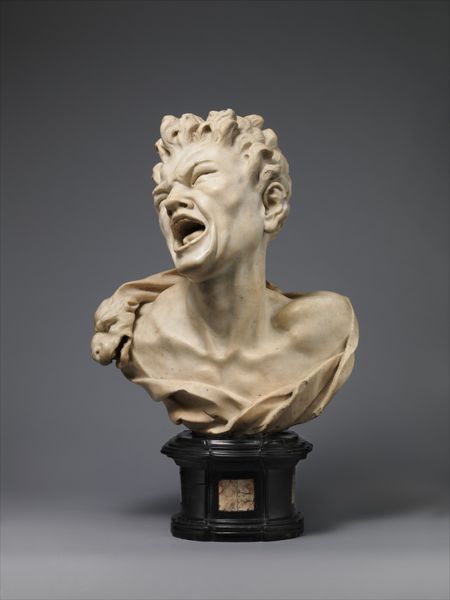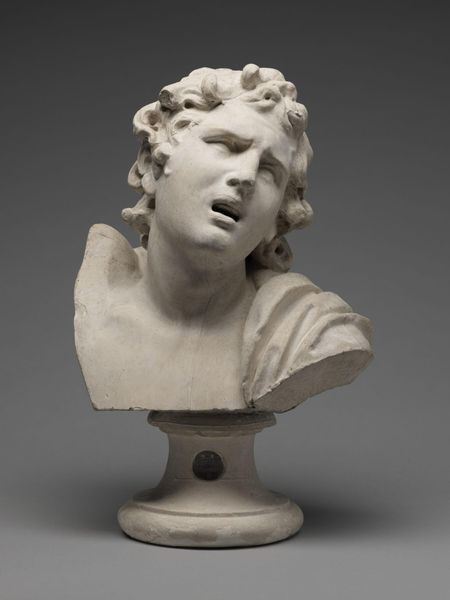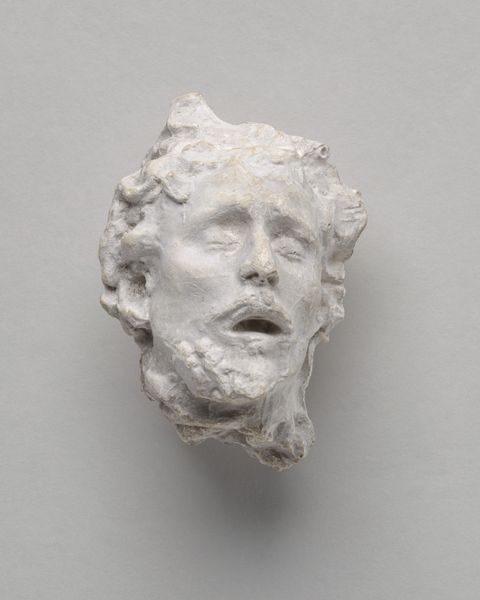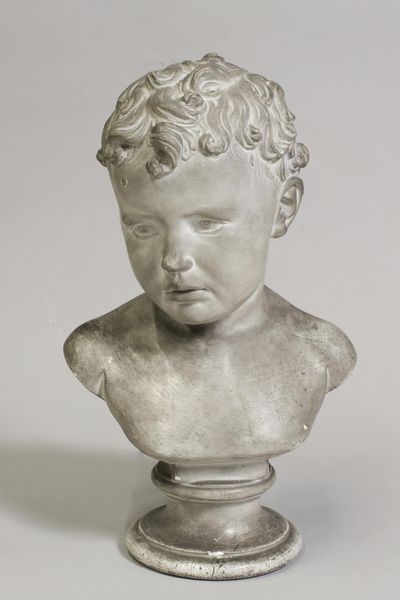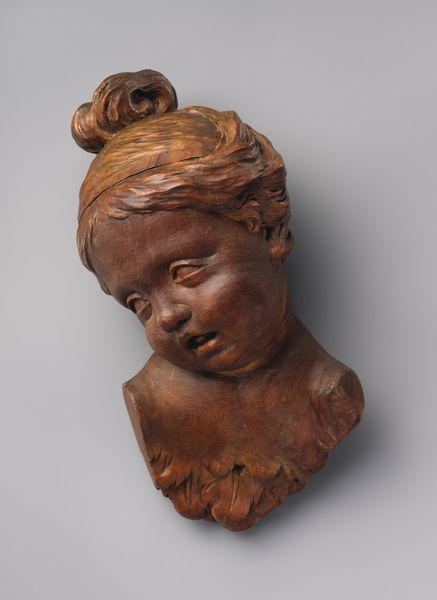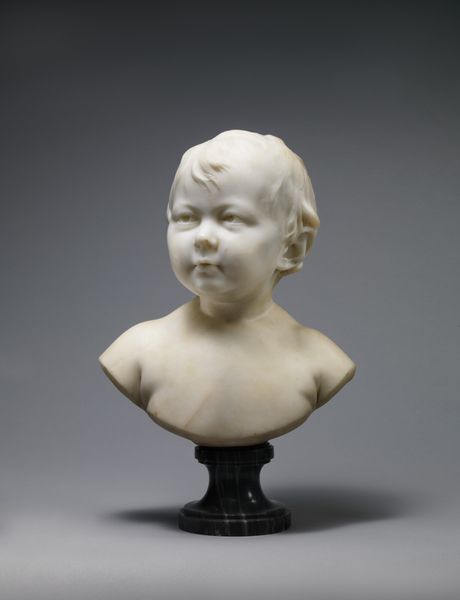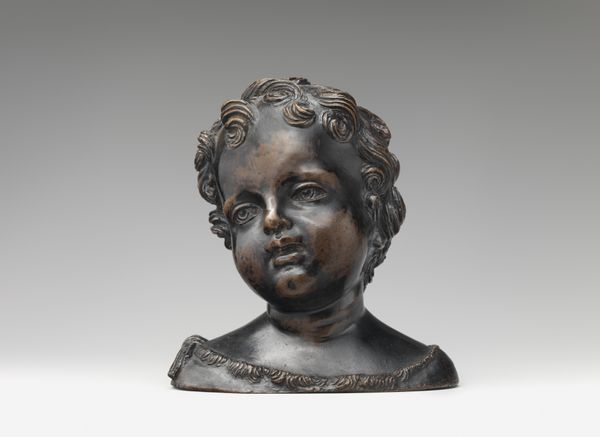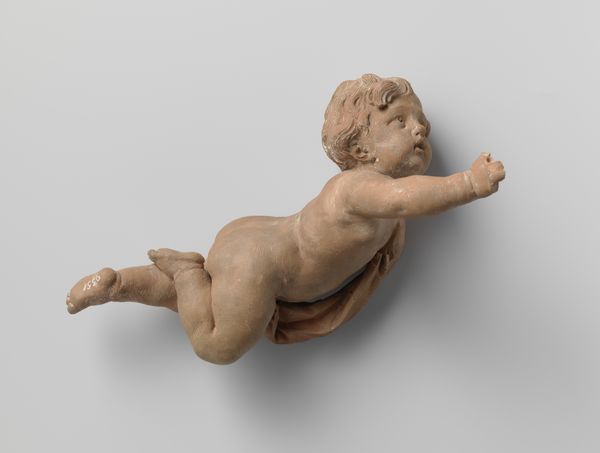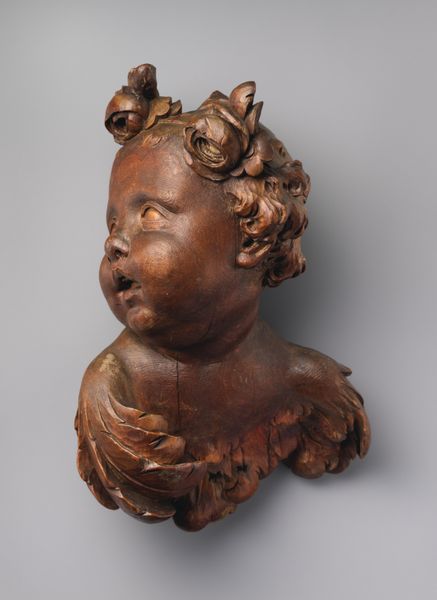
relief, sculpture, wood
#
portrait
#
baroque
#
sculpture
#
relief
#
sculpture
#
wood
Dimensions: height 16.5 cm, width 13 cm, depth 9.2 cm, diameter 25.4 cm, thickness 2.7 cm, thickness 11 cm
Copyright: Rijks Museum: Open Domain
Curator: What a compelling piece! Here we have Hendrick de Keyser the Elder’s wood relief carving, dating from about 1615 to 1620, entitled *Screaming Child, Stung by a Bee*, currently residing here at the Rijksmuseum. The immediacy of the child’s distress really leaps out, doesn't it? Editor: Absolutely, the raw emotion is quite something. My first impression is of the sheer craft of the work. The artist really knew how to work with wood to get such texture and expression; I am particularly drawn to the details of the carved hair and the depth of the screaming mouth. Curator: Indeed, and considering the broader history of childhood depictions, what statements do you believe that this work could have made during its own time? Child figures were, and sometimes are still are, idealized as these passive, perfect, almost cherubic beings—but to show an artwork of pain… Editor: It speaks to a cultural shift towards realism, doesn’t it? Moving from pure symbolism to capturing the unvarnished realities of the life. The materiality reinforces this for me, that carved wood roots this piece within the physical world of production and objecthood rather than elevated iconolatry. It brings childhood down to earth. Curator: Precisely! What strikes me most, viewing the child in relation to contemporaneous societal narratives, is the way in which vulnerability is captured; it almost pushes back against accepted ideals of childhood innocence as purely "cute" or delicate. It suggests children had experiences which should be legitimized and regarded more realistically than idyllically. Editor: And I wonder how this piece would have functioned in its original setting. The texture of the carved surface; one almost wants to touch it, run a hand over the undulating surface and the deep carved interior of the mouth to understand what it truly must've taken to manifest so starkly the immediacy of that suffering. Curator: Looking at this artwork forces us to confront and unpack our perceptions of both children, parenthood, and larger societal roles. Editor: I concur; analyzing art through the lenses of materials and the act of creation reveals deeper understanding. The agony immortalized by such intense and demanding labor underscores how powerfully de Keyser's art spoke.
Comments
rijksmuseum about 2 years ago
⋮
This sculpture probably depicts Cupid, the god of love, who was stung by a bee after stealing some honey. The incident is described in a poem attributed to the Greek poet Theocritus, who lived in the 3rd century BC. The Amsterdam city sculptor Hendrik de Keyser here drew on the poem to portray an extreme facial expression.
Join the conversation
Join millions of artists and users on Artera today and experience the ultimate creative platform.
